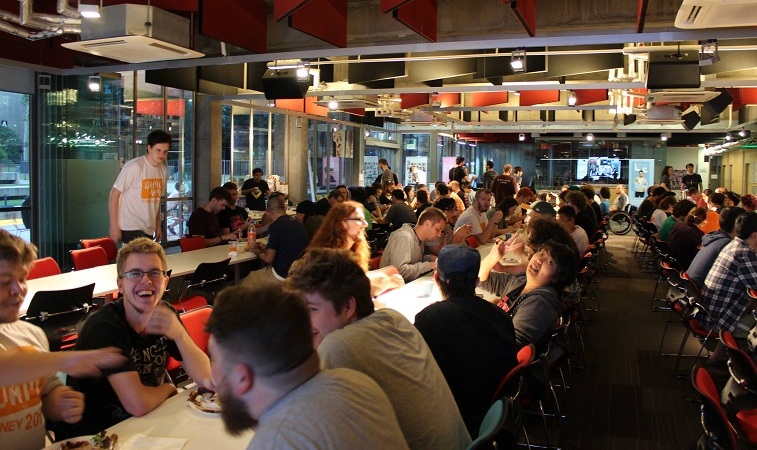
About a month ago, I went on down to North Sydney Institute (NSI) to attend their Global Game Jam event (organised with help from the International Game Developers Association). I went undercover to bring you the skinny on what it’s like to experience one of these marathon development events. Although I wasn’t able to participate in the jam as much as I would have liked, I think I got enough of an impression to give you a fairly good idea. If nothing else, I participated vicariously in the highs and lows what it’s like to hot house a game within 48 hours and isn’t the real treasure the friends we make along the way?… What’s that? I’m actually meant to be writing my thoughts and impressions to give others the vicarious experience? Well, then read on and I will hopefully give you something to ruminate on.
Firstly, for those uninitiated, a game jam is essentially a gathering of game developers who get together to make games in a short space of time. Traditionally, they are split up into groups and race to design and build their game completely from scratch. Every design element, every line of code, and every mechanic in all of the games I would see in my time at the event were developed and implemented within the 48 hours that the game jam lasted. Looking from the outside in, it looks to be a taxing and arduous experience. The jammers race against the clock to conceive and develop a game in what is essentially the equivalent of a video game development fun run. The ‘fun run’ comparison may be a strange one at first, but from what I see both leave people with a strange sense of euphoria and generally smelling a bit off. I arrived on scene somewhere around the 24 hour mark where concepts were being fleshed out, code stress tested, and people didn’t smell too bad.

After meeting with the organisers, I was given free rein to wander the jam as I saw fit. As I was going around and talking to each of the teams, I offered my services as a writer. But as to be expected, partially because writing is a highly specialised role, partially because I was late, the jammers had limited use for me when I finally showed up. One of the projects to take up my services was a game where the players were engaged in a “hair flick” battle in order to earn the attention of a much desired ‘senpai’. My task was simple: come up with hair-related fighting game smack talk/puns. I took to the task as best I could whilst still flitting around the rest of the jam. I returned a number of hours later with a humble offering of fairly terrible puns which, to their credit, the dev team added to their game. They even acknowledged me in the credits of their game as a contributor (albeit with a misspelled version of my name). Alas, proper accreditation is only bestowed on the worthy… or at least people who were present during the entire jam.
As I sauntered my way amongst the franticly racing game devs, I noticed something which surprised me. Whilst there was the usual presence of cis white dudes were certainly to be found in abundance, they could not completely whitewash the presence of some genuine diversity amongst the jammers. On my adventures through the jam I met the following (individually awesome) awesome individuals: I met a dev who hailed from Iran who was taking a break from developing another game which was heavily inspired by Persian mythology, a very shy and mild mannered older gentleman (who looked to be in his 50s) working with younger colleagues on 3D models, a somewhat sanguine trans woman coder who was working on implementing code to lead AI sailors to their deaths by following player-activated siren songs, and a happy-go-lucky cis woman artist working on the art for a game about Viking’s riding out Ragnarok (Norse mythology’s end of the world). Geek spaces are notorious for not always being spaces where diverse identities are present, or, at worst, even welcome. To give you some perspective on the wider picture; the 2015 IGDA Developer Satisfaction Survey found that the predominant respondents to their industry surveys were male (75%), white/Caucasian/European (76%), and fairly young (51% in the 25-34 age range).
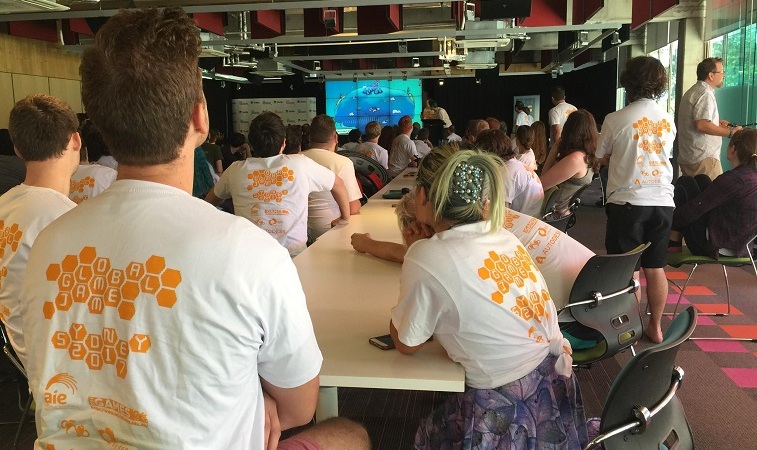
It is no small secret that geek and gaming communities by and large have a propensity towards being populated by individuals who generally fit into these particular demographics. There have been any number of articles, papers, books, blogs, videos, etc discussing why this is the case and what can be done to make geek spaces more diverse. I have nothing more which I can add to that particular discussion which hasn’t already been said more eloquently by people far smarter than I. I only put forward my humble and rambling observation which is this: although the voices of white and cis men were certainly ones which could be heard throughout the jam, I could not help but notice the distinct presence of diversity in the chorus line. It is my small hope that highlighting their presence encourages others with their own diverse experiences to come in and add their own voice to the gaming scene in Sydney.
I asked the organiser and head teacher for game design at NSI, Seinwai Chew, what her secret was to developing a diverse space. She informed me that, besides ensuring a basic level of civility was enforced, she works to foster the creativity and passion for games in all who participate in the jam. I’m not always certain that passion alone is enough to overcome every obstacle when it comes to building diverse geek communities, but it appears to have worked quite well at NSI… at least certainly in terms of this game jam.
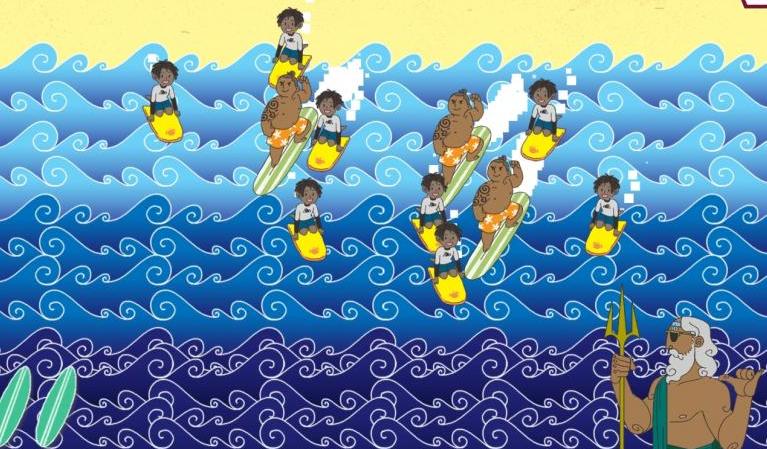
Another team who caught my eye were a very friendly couple who were working together on a bright and colourful mobile game. You would play as Poseidon, god of the sea, sending waves to push mortals back to shore and away from your watery realm as well as waves which were far too “radical” to be surfed by any mere mortal. It was an eclectic mix of 90s surfer culture and ancient Greek mythology with a strong sense of humour thrown in for good measure. My lasting contribution to their project was to change the word Poseidon to Broseidon in the title… which they appeared to be ecstatic with. Although I promised that I would return with more terrible amalgamations of Greek mythology and surfer culture (mainly more puns involving the word “bro”), I was dragged away by the rest of the jam and unable to contribute further. As befits surfers/Greek gods of the sea, however, they were totally cool about it.
Another pleasant surprise for me: the fact that pretty much every interaction I had with all of these people were consistently pleasant throughout the jam. I’ve interacted with many geeks/nerds and creatives facing down the barrels of looming deadlines, but these gentlefolk were consistently more positive than even the most professional team I’ve met in my short life. I’m not sure what exactly was different in the game jam environment, but they were all extremely polite and (almost) without fail, eager to speak with me about the projects they were working on. Eager to discuss their games despite being in various states of stressed, tired, and anxious. They made me feel welcome at a time when I’m certain I was being a very obnoxious outsider who came in to ask probing questions.
During my aforementioned discussion with Chew, she mentioned that one of her primary motivations for hosting and running the game jam was to help her students practice social interaction and teamwork. A game jam may not be everyone’s cup of tea, but I can certainly imagine it being quite enticing to a socially awkward game dev who’s better at expressing themselves through code/art/story than through conventional social interaction. After my conversation with Chew, and hearing her passion for the welfare and success of her students, I realised that hosting an entire game jam to help teach them this crucial skill set would just be an entirely reasonable extension of her holistic philosophy on teaching. Judging by my interactions with the participants at this jam, I couldn’t really think of a better place to learn.
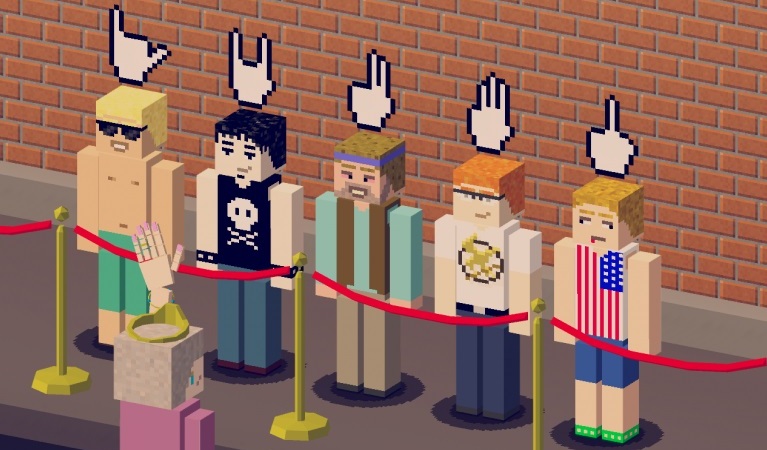
Don’t let me paint too rosy a picture of game jams for you though. Not every jam experience turns out entirely awesome. I met a game dev who was working solo on his own project, a Queen of England simulator, where you attempt to please each of your subjects with a unique wave as you drive past them. The developer chose to work by themselves for this jam, due to some negative experiences he’d had with previous events he attended. In one particular anecdote, an artist on his team spent an evening drawing medieval themed artwork for what was ostensibly a sci-fi game. The artist apparently gave some flimsy excuse involving the game’s conceit of time travel but nonetheless had effectively produced work which the team could not use. After that experience, I couldn’t say I blamed him for wanting to go solo.
Another blessing (or bane) for game jams is that pretty much anyone can sign up and join a team. This can result in interesting situations such as the team which hosted a tattoo artist who came to draw for the project. The team he was working with made good use of his skills and incorporated his style into the fabric of their project. Although this mix bag of personas can be a boon, it could also be a liability, as a team can find themselves saddled with someone who is constrained in their ability to contribute by either their temperament, communication style, or skill level. This, I imagine, would be an extremely frustrating experience in the high pressure environment of a jam. Short deadlines and sleep times generally contribute to short tempers, but by and large, the jammers were pretty happy to accommodate the strengths and weaknesses of their teammates.
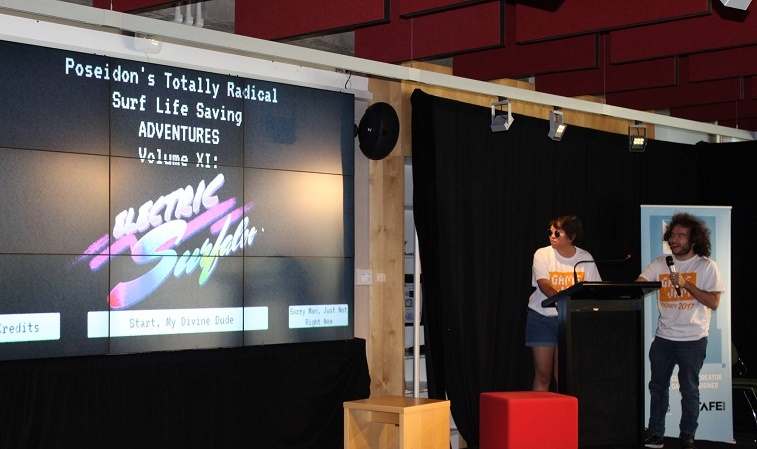
The final day had all of the teams debut their games, demonstrating their finished products to the jam itself. It was an intriguing experience for me to see the finished product of a number games I had witnessed being worked on in their quasi-final/finished state. Pretty much everyone I spoke to was exhausted from the ordeal, but ultimately satisfied with their part in it. Bleary-eyed and not so bushy tailed, they said their goodbyes and went home. Their games can all be found on the Global Game Jam website and are generally in a state where they can be played (although bugs are to be expected).
Overall, I very much enjoyed my time at the NSI game jam and I give thanks to the organisers (including the Sydney chapter of the International Game Developers Association) for putting it together. I’d also like to thank the devs who spoke with me throughout their ordeal and answered my numerous and, no doubt, impertinent questions. It was a pleasant experience and I’d definitely recommend it for anyone who might be interested. My experience of the jam may not be as holistic and thorough as I was originally planning, but I hope I have been able to convey to you some facet of what the game jam experience is like.
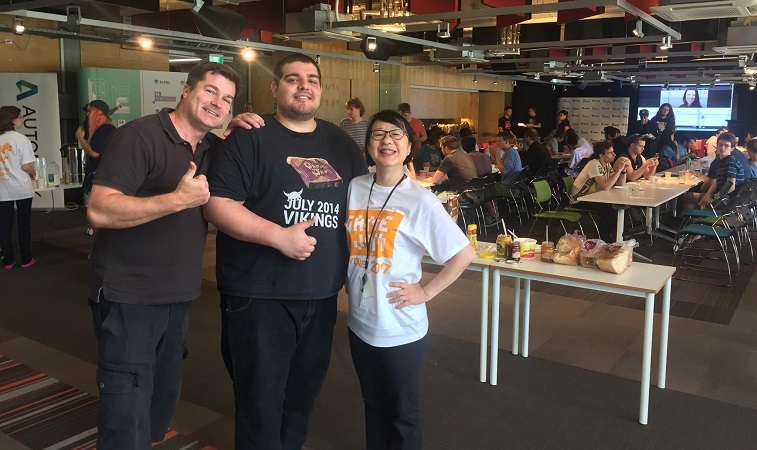
DISCLAIMER NOTE: Above are some of my humble observations of the event from an outsider’s perspective and any opinions expressed within are purely my own. I am not affiliated with NSI or IGDA and I paid for my ticket in full out of my own pocket.
If you’d like to read more of our thoughts on previous Global Game Jams, you can check out our write up of the 2012 event here. If you want to check out more games from the Global Game Jam, you can try them out yourself here.
You can check out the International Game Developers Association here.
Photos courtesy of the North Sydney Institute.

